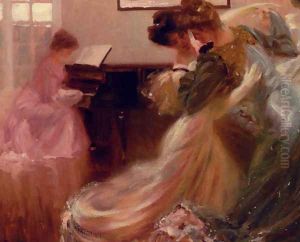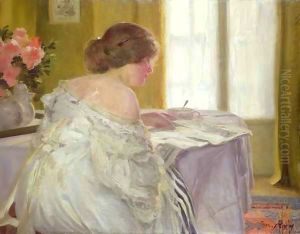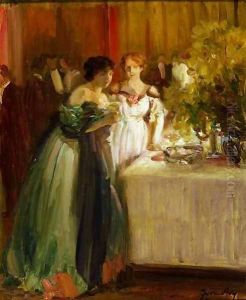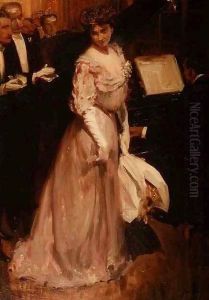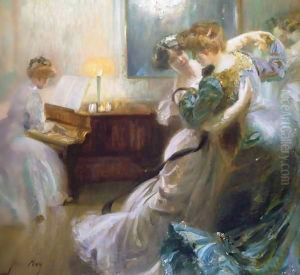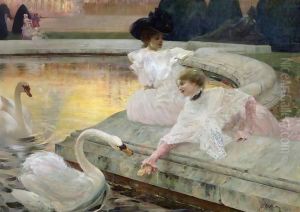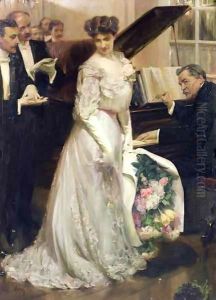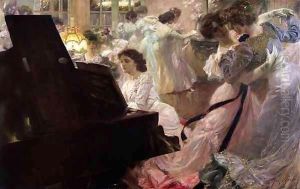Joseph-Marius Avy Paintings
Joseph-Marius Avy was a French painter and decorator known for his work during the late 19th and early 20th centuries. Born on October 19, 1871, in Roquevaire, Bouches-du-Rhône, Avy showed an early interest in the arts and pursued his passion by studying at the École des Beaux-Arts in Marseille. He later continued his education in Paris, where he was a pupil of the renowned Léon Bonnat and Jean-Léon Gérôme, two influential and academically respected artists of the time.
Avy's work largely reflects the academic tradition of his teachers, characterized by a strong emphasis on draftsmanship, clear composition, and a somewhat restrained palette. He was particularly noted for his historical and religious paintings, as well as his decorative work which included murals and interior designs for public and private buildings. His style was in line with the tastes of the period, which favored grandeur and a certain formality in painting.
Throughout his career, Joseph-Marius Avy participated in various exhibitions, including the prestigious Salon de Paris, where artists of the day sought recognition and commissions. His works were well received, and he gained a reputation for his artistic abilities and his contributions to decorative arts. In addition to painting, Avy was involved in teaching and was known to have had a significant influence on the next generation of artists.
Avy's career spanned a period of great change in the world of art, as the late 19th and early 20th centuries were times of transition and the birth of new movements such as Impressionism and Modernism. Despite the shifting artistic landscape, Avy remained committed to his academic roots and did not deviate much into the emerging styles.
Joseph-Marius Avy passed away on January 20, 1939, leaving behind a body of work that, while perhaps not as widely known today as that of his more famous contemporaries, still represents an important facet of French art during a period of rich cultural activity. His legacy is preserved in the murals and paintings that continue to adorn the spaces for which they were created, as well as in the collections of those who appreciate the academic art tradition.
